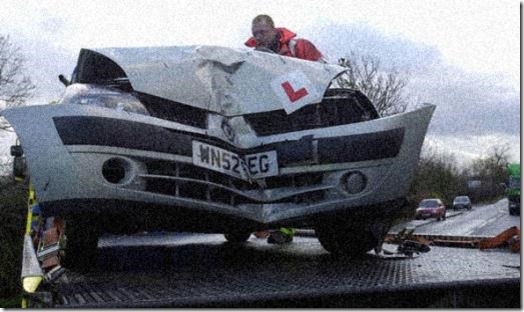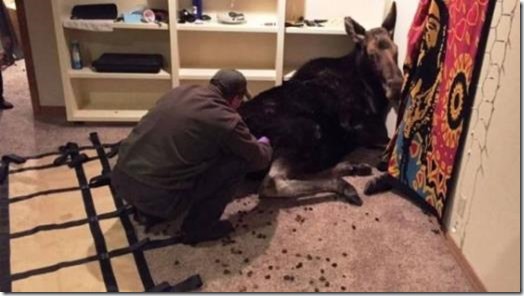 I read about this a while back, but it seems the trial has come to an end. The BBC’s story title is misleading, because it certainly doesn’t answer the question “what really happened when Swedes tried six-hour days?”
I read about this a while back, but it seems the trial has come to an end. The BBC’s story title is misleading, because it certainly doesn’t answer the question “what really happened when Swedes tried six-hour days?”
The only detail that matters is that those who had their working day cut to six hours were still taking home the same money. I seem to be the only one who sees that for what it is: an effective salary increase of about 25%, which means an increase in wage costs of the same amount for any company who has to foot the bill, or the taxpayer if the government subsidises it.
I mean, how can you trust the comments of people who have been part of the trial to give objective or meaningful feedback? They got a huge pay rise and lots of extra free time – who wouldn’t like that? It would have meant a hell of a lot more to find out what they said if they’d had to take a 25% pay cut. I’m sure they wouldn’t have liked that anywhere near as much.
Of course, the story contains the ubiquitous tale of a mummy able to spend more time with her child (sorry, her daughter – got to keep the old feminine wheel turning full on, haven’t we?)
Unless companies (or government) are prepared – or able – to increase wages by this amount, the numbers just don’t stack up. Less hours per person on the same pay means wage bills go up. Less hours per person also means less output, requiring more jobs, so wage bills go up. Less hours per person and no extra jobs means reduced output, so profits fall. Government subsidies to fund it means higher taxes, so take home wages go down. Increased costs will (and I mean ‘will’) result in companies going bankrupt, so more unemployment. And so it goes on.
But, hey. At least women will get more time at home with their daughters, eh?
Also funny are some of the comments left by frequenters of the BBC forums. One comedian, who goes by the name “bbchateukip”, which clearly defines both the mentality and the political leanings of the user in question, says:
My managers are obsessed with input rather than output – they are quite happy for someone to sit there doing rubbish work but see them as good because they spend 12 hours a day – I am considered lazy as I do the bear [sic] minimum hours but because I know how to use a computer I actually achieve more! this is not noticed though – but least I get to spend time with friends and family
I’m sure his employer doesn’t quite see him enveloped by the same radiant glow, and is probably quite accurate in their assessment. I’m also pretty sure that his implication that everyone other than him is doing a piss poor job is also less than true. And I’m certain that the 24 likes he has acquired are also made by equally misguided people.
Life – and the standard of work you produce – is a little more complicated than just being the result of the number of hours you work. Business success, on the other hand, is pretty much directly connected with it, and could not be sustained following a 25% reduction in hours worked.
The comments above are my own, based on the earlier stories and the latest one from the BBC. However, I have since discovered that quite a few other sources have reached similar conclusions. All of the stories make the point that it is too expensive. Even the articles with misleadingly positive headlines say the same thing. The other stories all appear to be based on this Bloomberg one.
If you have the mental capacity to push the feminist claptrap to one side and look into the guts of the matter, the trial could never have been successful for the simple reason that workers got to work fewer hours for no loss in pay. That detail prevented the results from ever having any scientific value. The only way the trial could have had scientific value would have been if those taking part earned 25% less for doing 25% fewer hours, because if it ever became the norm then – one way or another – that, or rather the cost of that, would have to have been absorbed either by the companies who did it, or the government if it subsidised it.
But even that is a red herring, since there is no way on God’s Green Earth that someone is going to perform 25% (or more, which was the hope) better for a 25% reduction in hours – even less so if they also take a 25% drop in salary. And you don’t need a stupid, very expensive experiment to try and prove otherwise. It just isn’t going to happen.
As it turns out, absence due to sickness (one of the goals) did not improve. In some cases it actually increased significantly. It also appears that a trial which ran between 1989 and 2005 was stopped because there were insufficient data to support the supposed benefits. In other words, it did not work.
Reading between the lines, the trials were carried out at places where the staff are probably about 95% female (retirement homes). And another trial is due to begin amongst Sweden’s social services shortly (also gender-skewed if they’re anything like in the UK), with the complicating factor that there is a shortage of social service staff anyway, and this “experiment” is partly intended to drive recruitment in that area.
Truly scientific experiments attempt to alter as few variables as possible, then look for effects of changes to those that are. If you want to prove that working fewer hours is better, you can’t ignore the costs of doing it, and you can’t tack a recruitment drive on to the end. The results would be absolutely meaningless, no matter what the outcome.
 The Sun is at it again. I saw a small item in today’s paper copy reporting that it will be -15°C by the end of the week, and that it will stay like this until the end of March. Oddly, the front page of the online version’s UK news has a story about how plants are blooming a month early, since spring is on the way.
The Sun is at it again. I saw a small item in today’s paper copy reporting that it will be -15°C by the end of the week, and that it will stay like this until the end of March. Oddly, the front page of the online version’s UK news has a story about how plants are blooming a month early, since spring is on the way. I
I  This article makes interesting reading. The heads of more than half of the top 500 companies in the UK say Brexit has already had a negative impact business, and two-thirds believe it will worsen over the next 12 months. The only people who have benefited so far are those who export, where the weaker pound has helped them – which makes me wonder what my arsehole of an ex-company’s directors said, since they don’t export very much, and yet were vocal supporters of Brexit prior to the referendum.
This article makes interesting reading. The heads of more than half of the top 500 companies in the UK say Brexit has already had a negative impact business, and two-thirds believe it will worsen over the next 12 months. The only people who have benefited so far are those who export, where the weaker pound has helped them – which makes me wonder what my arsehole of an ex-company’s directors said, since they don’t export very much, and yet were vocal supporters of Brexit prior to the referendum.
 I saw this story a few days ago about a man in Norfolk who failed his driving test “in just 5 seconds”.
I saw this story a few days ago about a man in Norfolk who failed his driving test “in just 5 seconds”. On 30 September 1938, Neville Chamberlain (then, the British Prime Minister) returned from a meeting with Adolf Hitler. He is famously pictured holding a piece of paper aloft, and he can be seen on newsreel footage saying:
On 30 September 1938, Neville Chamberlain (then, the British Prime Minister) returned from a meeting with Adolf Hitler. He is famously pictured holding a piece of paper aloft, and he can be seen on newsreel footage saying:
 Originally published 25 December 2016.
Originally published 25 December 2016.

 Sky’s Discovery channels often carry a lot of stuff about evolution, which is quite ironic given the reaction by many people on various web forums over the last couple of months to the possibility that the Sky/Discovery partnership would become extinct at midnight on 31 January 2017.
Sky’s Discovery channels often carry a lot of stuff about evolution, which is quite ironic given the reaction by many people on various web forums over the last couple of months to the possibility that the Sky/Discovery partnership would become extinct at midnight on 31 January 2017. Another one
Another one  Following on nicely from that previous story about someone playing the “offended little woman” card against some hapless male on a web forum, this story came in as if to emphasise the ridiculousness of the situation in this country regarding women and their “rights”.
Following on nicely from that previous story about someone playing the “offended little woman” card against some hapless male on a web forum, this story came in as if to emphasise the ridiculousness of the situation in this country regarding women and their “rights”.